Louis Kahn's Modernist Tradition Style Mosque with a Contemporary Touch
Bait Ur Rouf Jame is a mosque in a prosperous community of eight hundred families in Faridabad, Dhaka, Bangladesh. It was designed by Marina Tabassum and built-in 2005. The mosque was among the 2016 Aga Khan Prize for Architecture winners.
The construction of the mosque was a memorable personal journey. It was her first project since starting her practice, and Tabassum realized her grandmother's promise to design, fundraise, and build it. The process of building the mosque became a "healing" for the grief Tabassum and her grandmother experienced due to the loss of Tabassum's late mother.
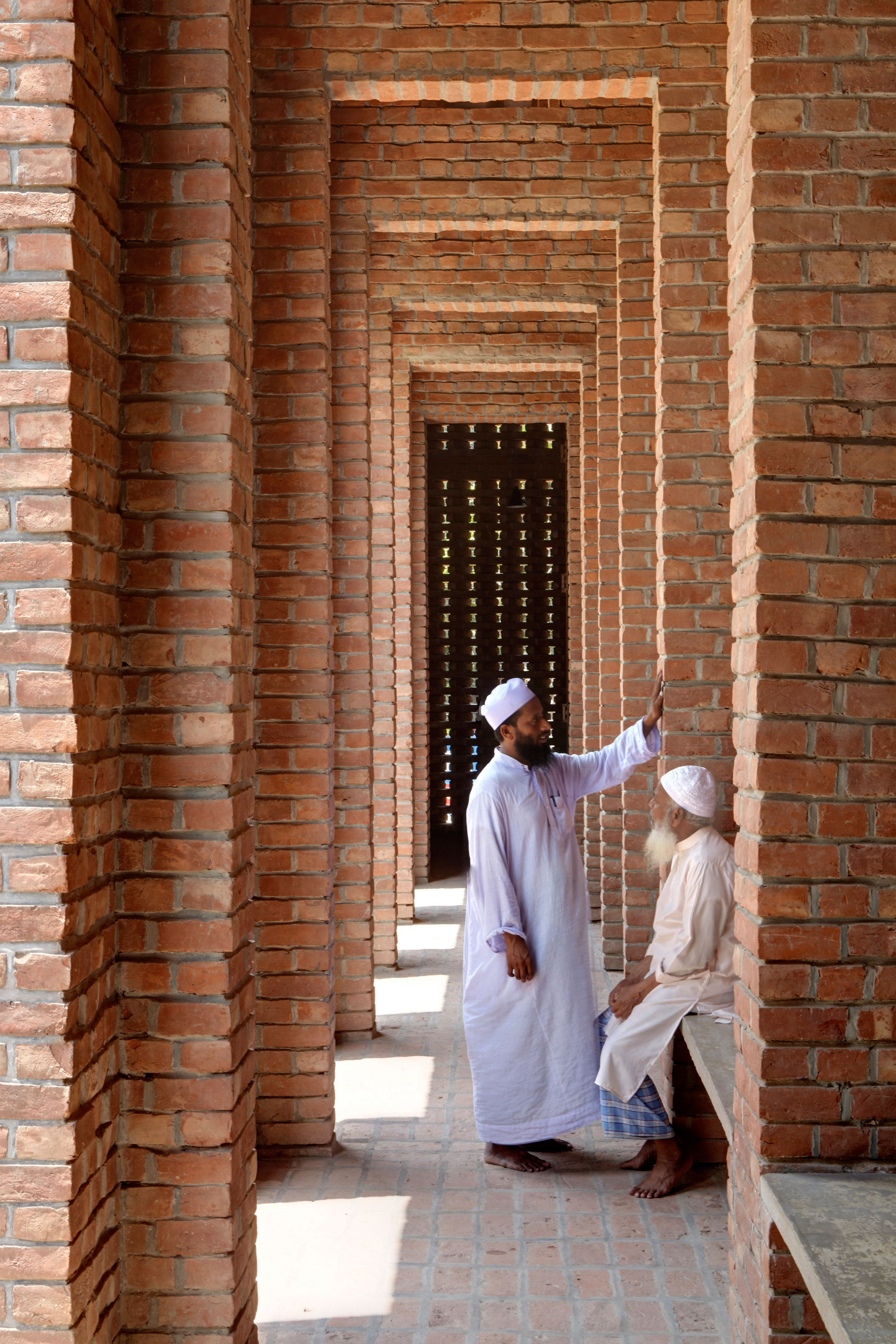
Courtesy of Marina Tabassum Architects
Growing up in a culture where women did not worship in mosques gave Tabassum the impression that “mosques are for men only.” This allowed her to design the mosque, as she had no preconceptions about what it should look like.
Marina Tabassum's research brought the mosque’s design to an initial idea of what a mosque is. The essence of the mosque as a gathering place for Muslims in the brotherhood of the Qibla in submission to God leads to the Kaaba, but it is also a place to gather for social, cultural, and communal reasons without being symbolic. It prioritizes a focus on spirituality over the symbolic role of the mosque. Being a populated neighborhood, the mosque will be surrounded by more buildings so Tabassum designed the masjid to be “more introverted” by bringing light into the mosque.
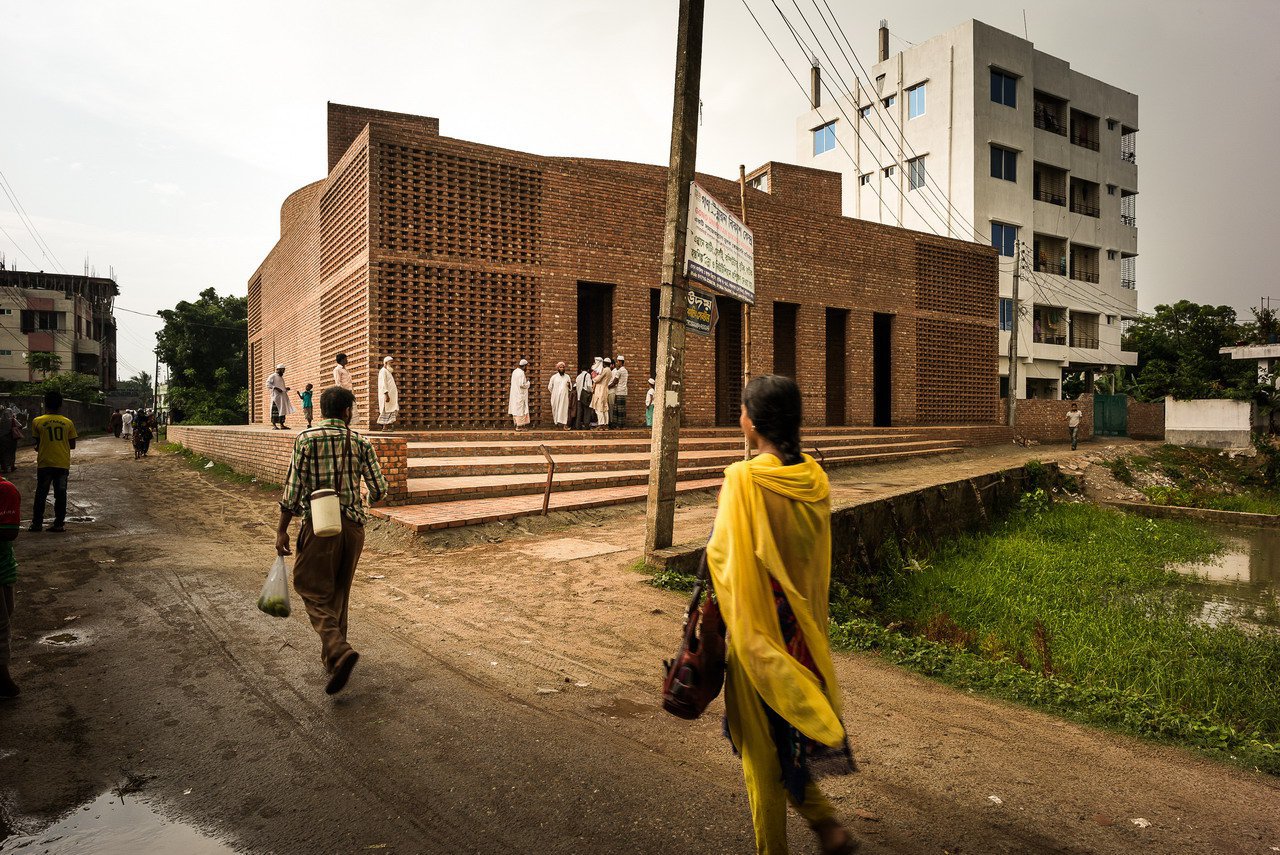
Courtesy of Marina Tabassum Architects
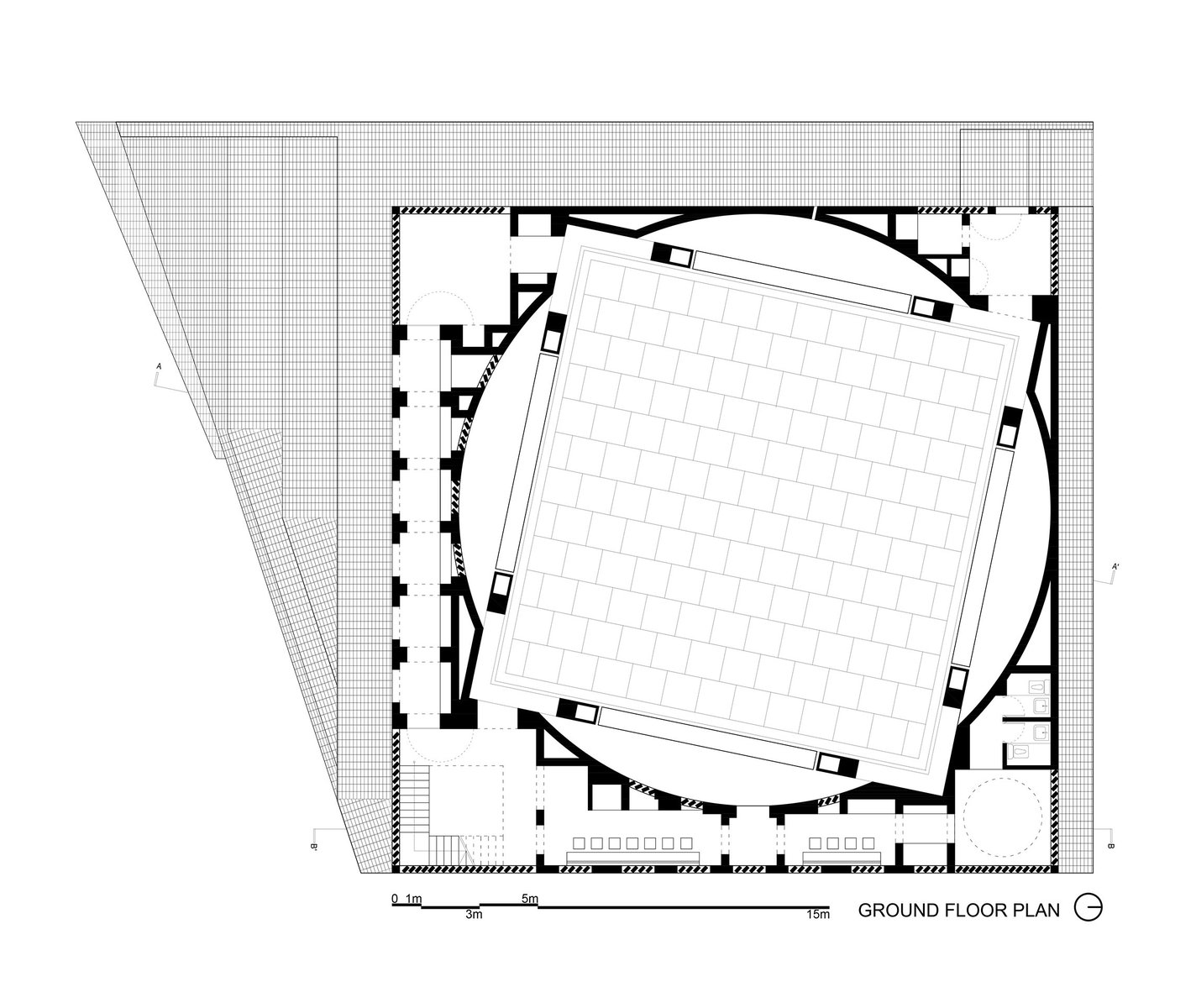
Courtesy of Marina Tabassum Architects
The Bait Ur Rouf Jame mosque stands on a raised plinth to protect against flooding as well as a communal lounging area that separates the building from the busy street scene. Along the southern edge of the mosque are columns forming entrances that provide access to other spaces. To maximize space, the empty area between the outer facade and the prayer room on the east side is used as an ablution area.
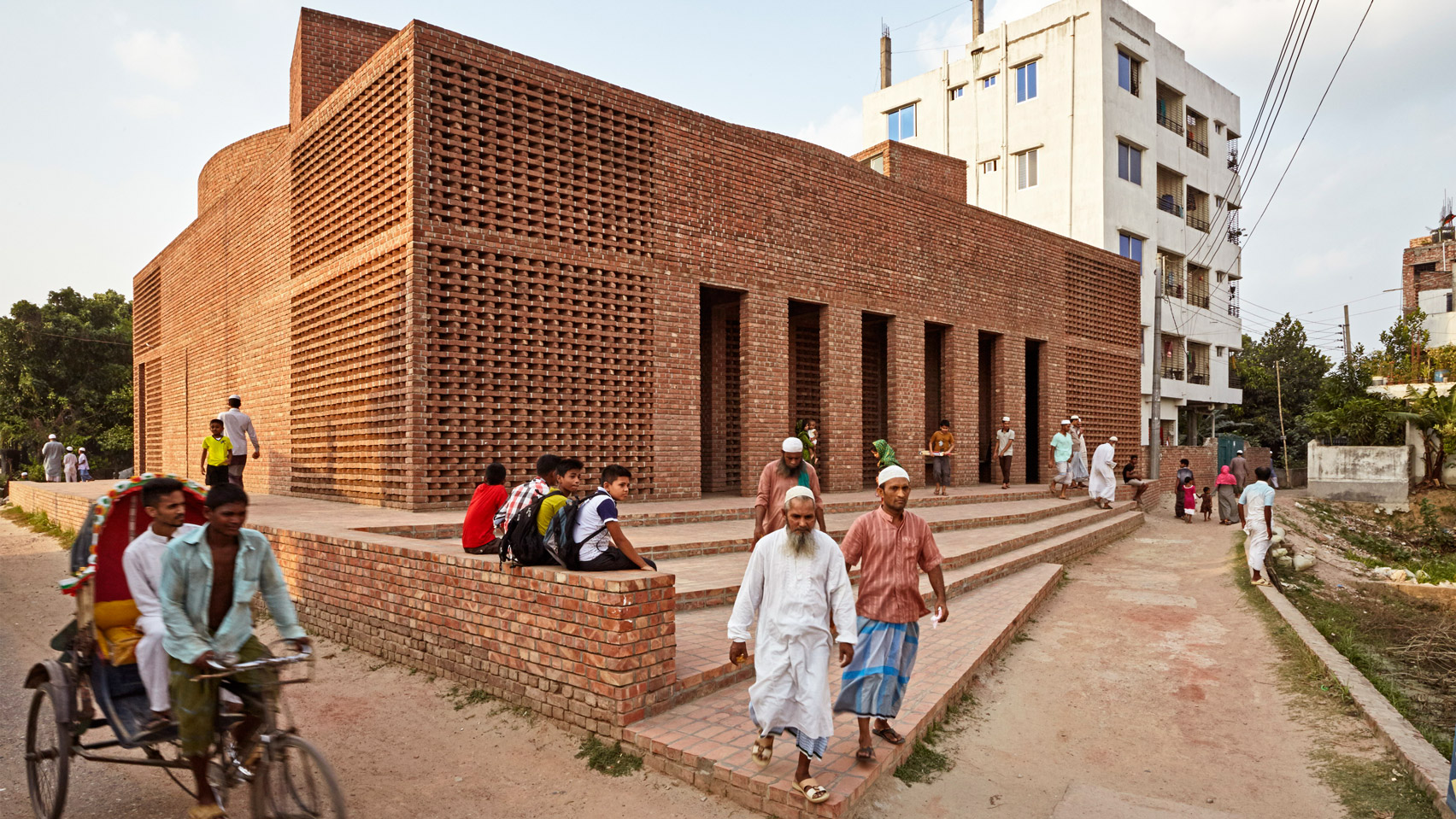
Courtesy of Marina Tabassum Architects
Materials play an important role in creating a certain atmosphere in a building. The structure's use of terracotta bricks was inspired by the heritage of mosques during the Bengal Sultanate, which used the same type of stone, and the modernist tradition of Louis Kahn.
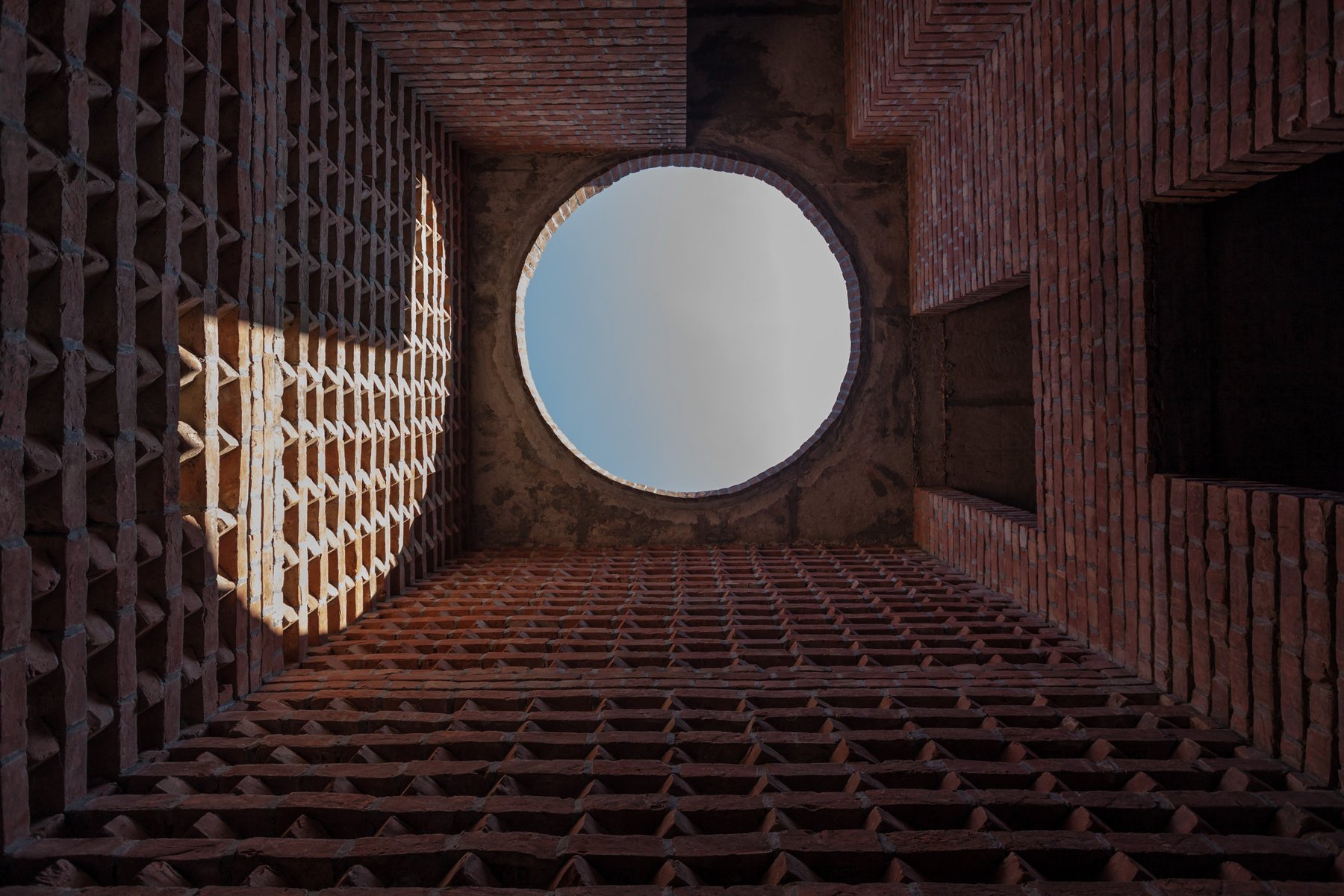
Courtesy of Marina Tabassum Architects
The mosque’s construction contains layers of rectangular prayer rooms enclosed within cylindrical walls, which are in turn surrounded again by a square terracotta brick structure as the face of the building. The main prayer room is designed as a colonnade-less space to make it more spacious. The cylindrical volume inserted into the square has a striped cylindrical section assisted by sunlight intended as a qibla direction line as it points towards the Kaaba in Mecca. The sunlight infiltrating through the vertical gaps in the brick walls and the upper openings of the building creates a solemn atmosphere.
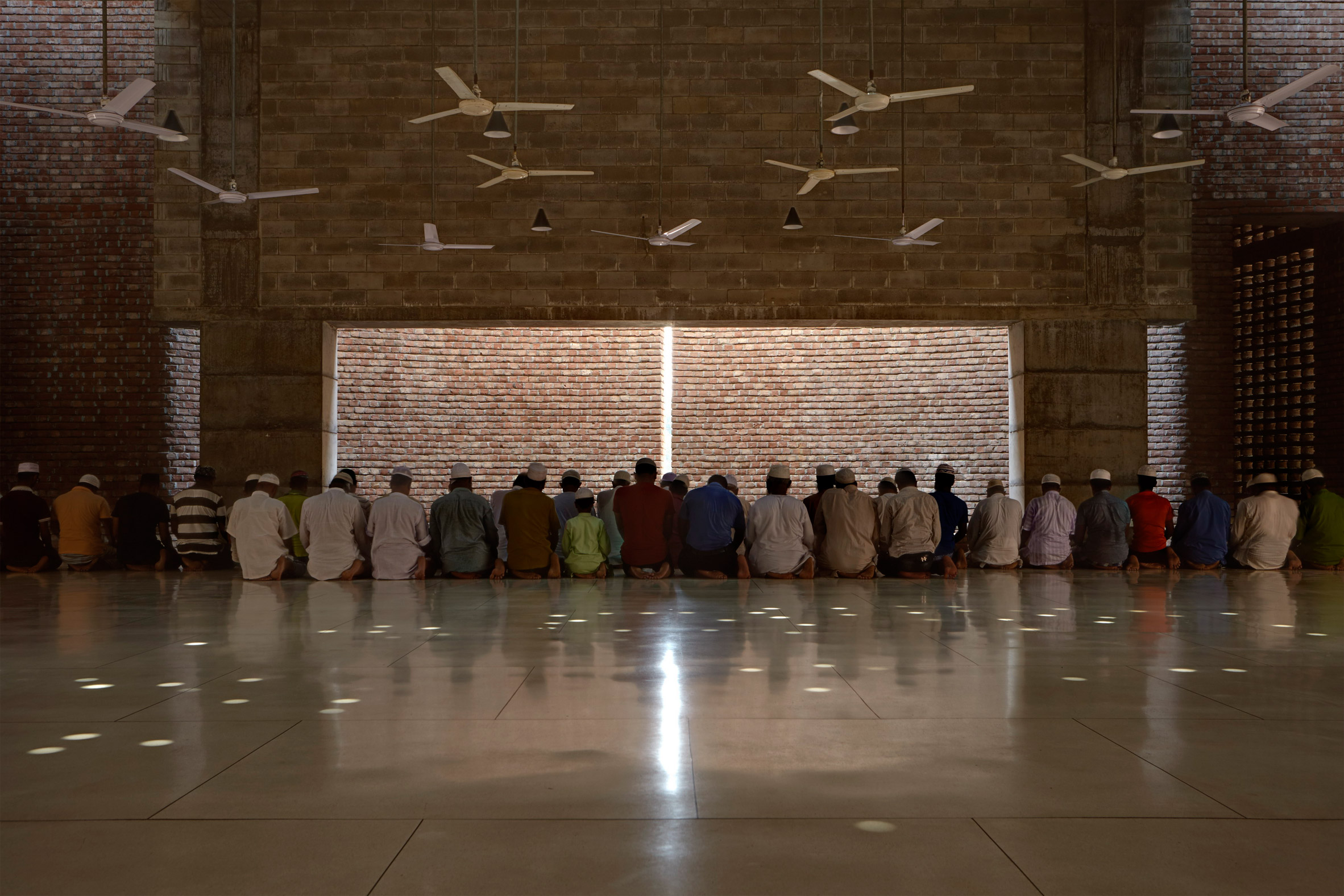
Courtesy of Marina Tabassum Architects
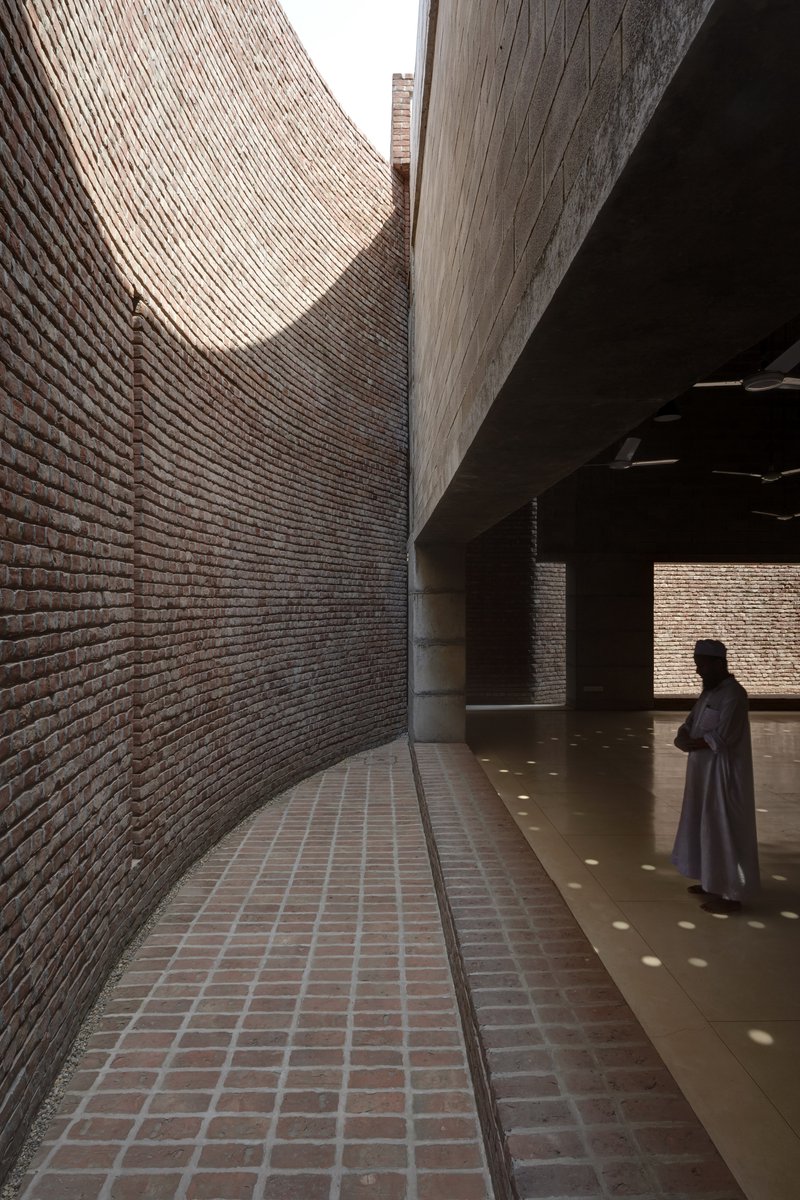
Courtesy of Marina Tabassum Architects
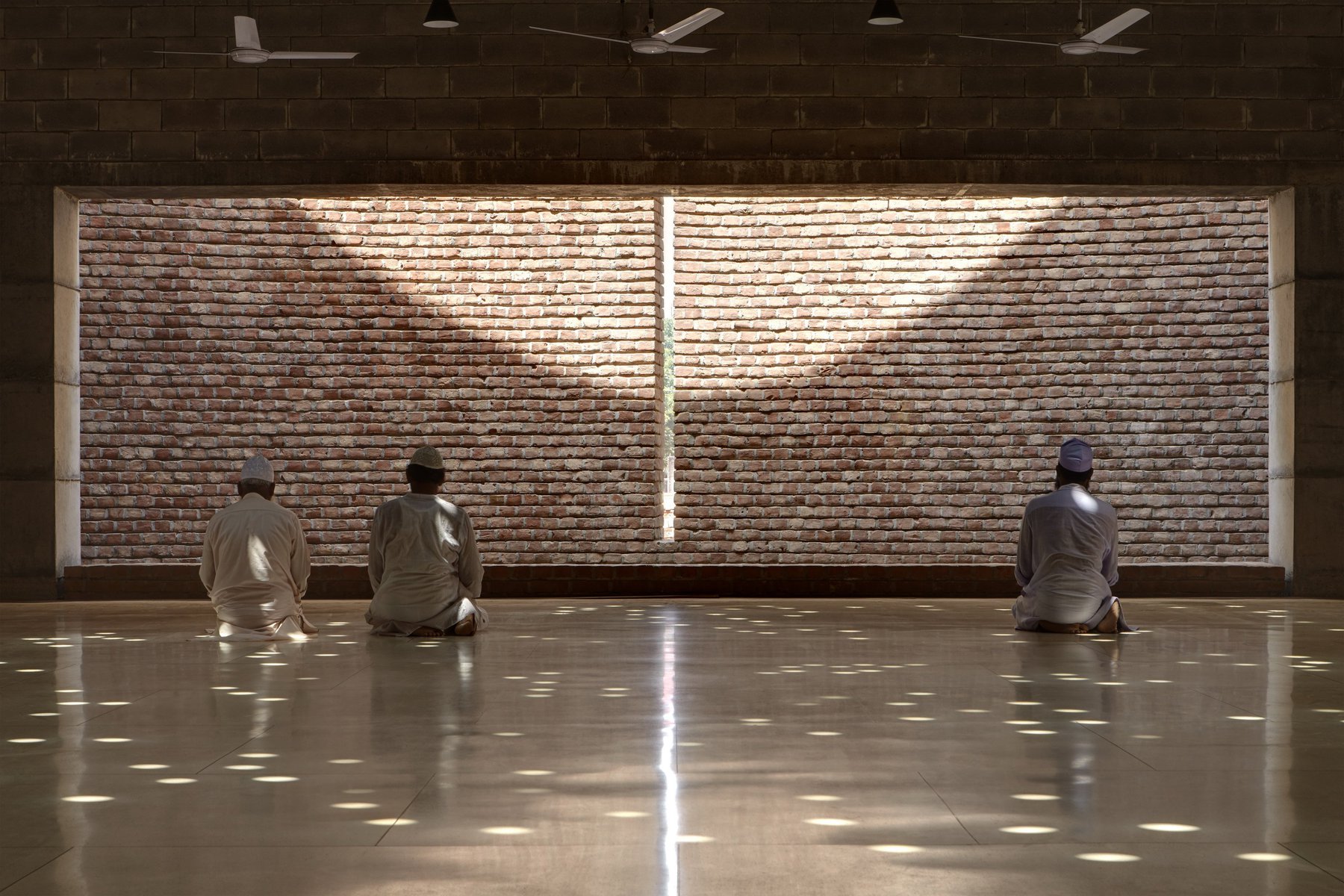
Courtesy of Marina Tabassum Architects
The center of the building has four voids at the corners, creating a small courtyard of open bricks that allows light and air to enter. It is complemented by a circular perforated ceiling that adorns the floor with speckled light patterns. Tabassum has been designed to maintain cross-ventilation and create good drainage to address the issue of rainwater that may enter through the opening at the top of the cylindrical side.
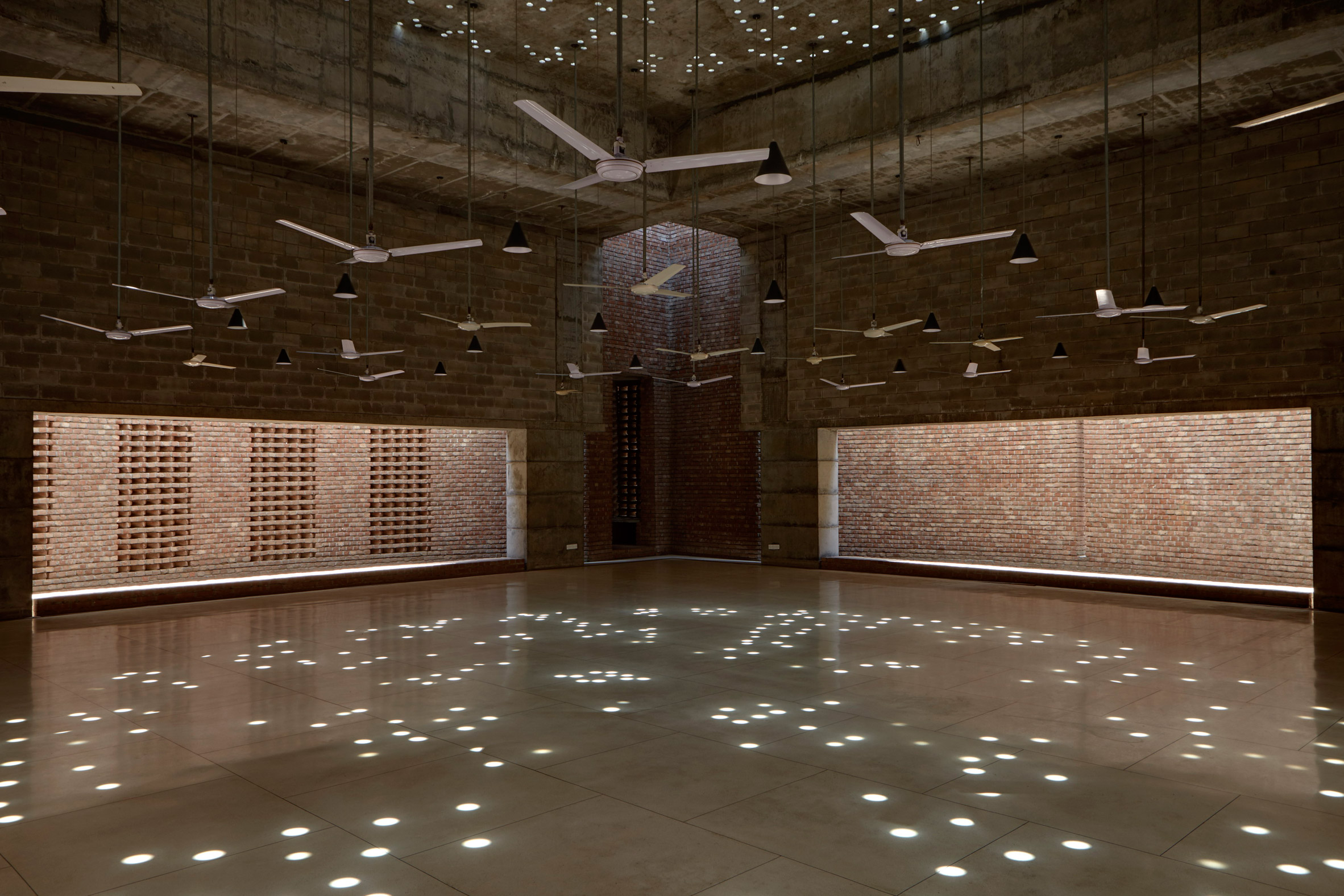
Courtesy of Marina Tabassum Architects
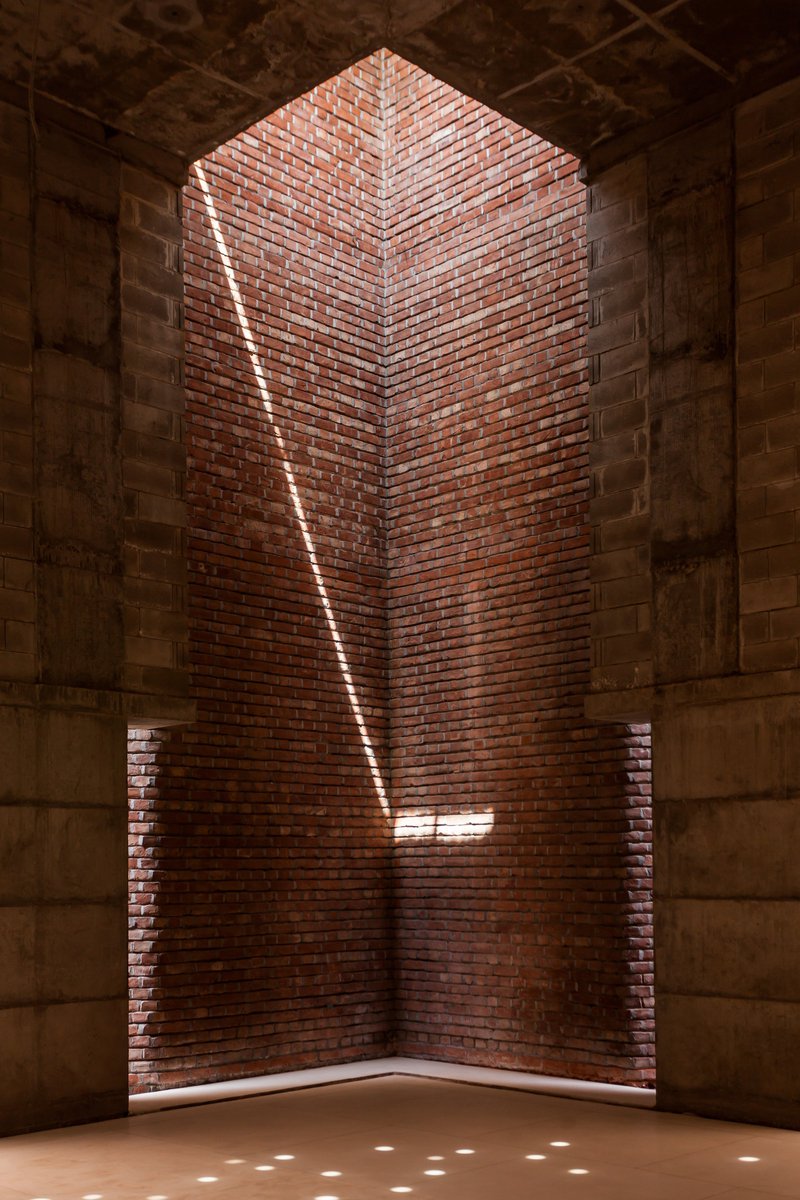
Courtesy of Marina Tabassum Architects
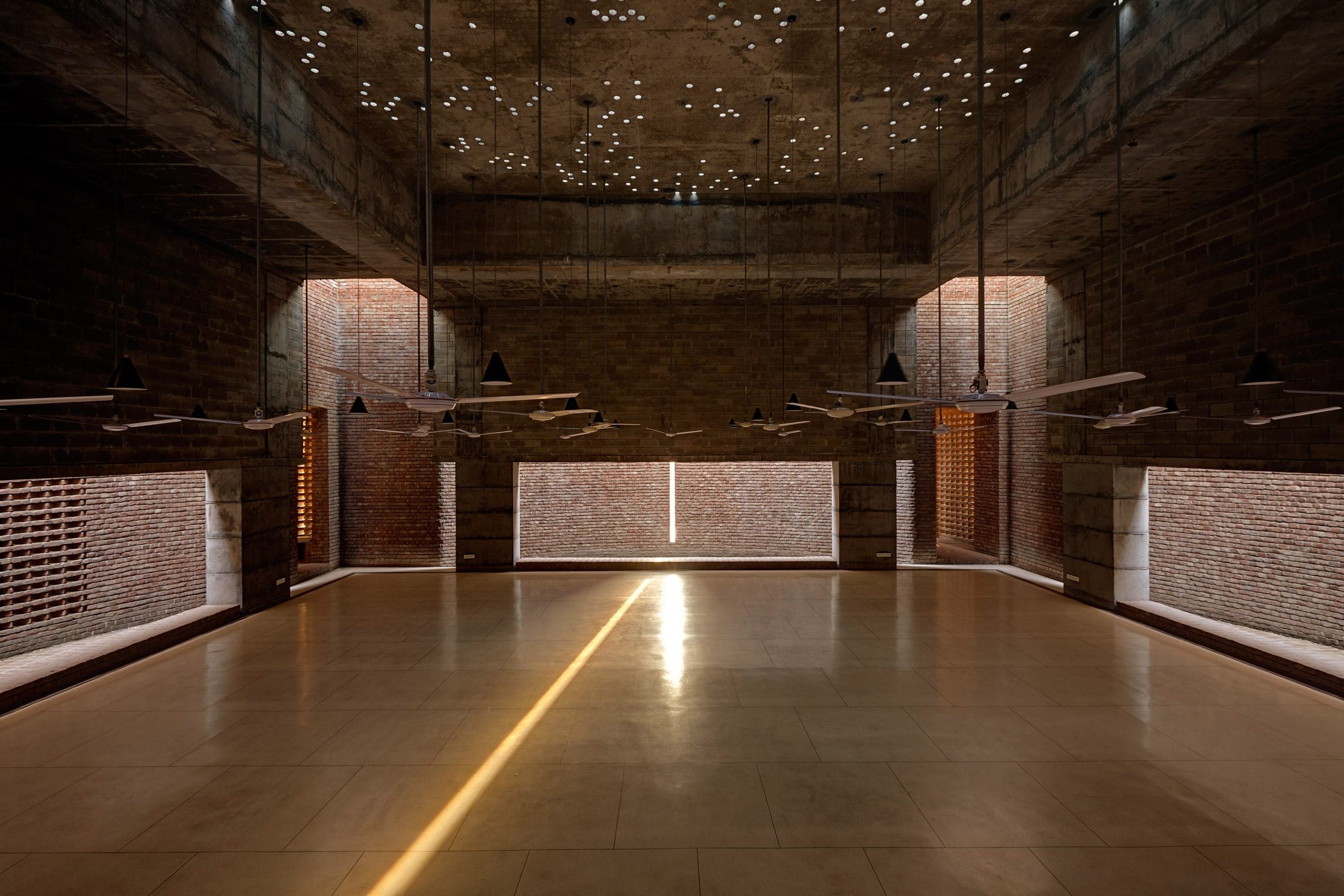
Courtesy of Marina Tabassum Architects
The project was built using local materials with the involvement of local craftsmen. Tabassum prioritizes building by “'hand'” because each material and the touch of the craftsmen in a building in a region have their architectural characteristics without leaving the contemporary quality in balance. The materials and dedicated local craftsmen are evident in the quality of the spaces and architecture. The architect said that although completed on a limited budget and funded by charitable donations, the mosque stands as a spiritual destination through which light can span the distance between this world and eternity, between today and eternity.

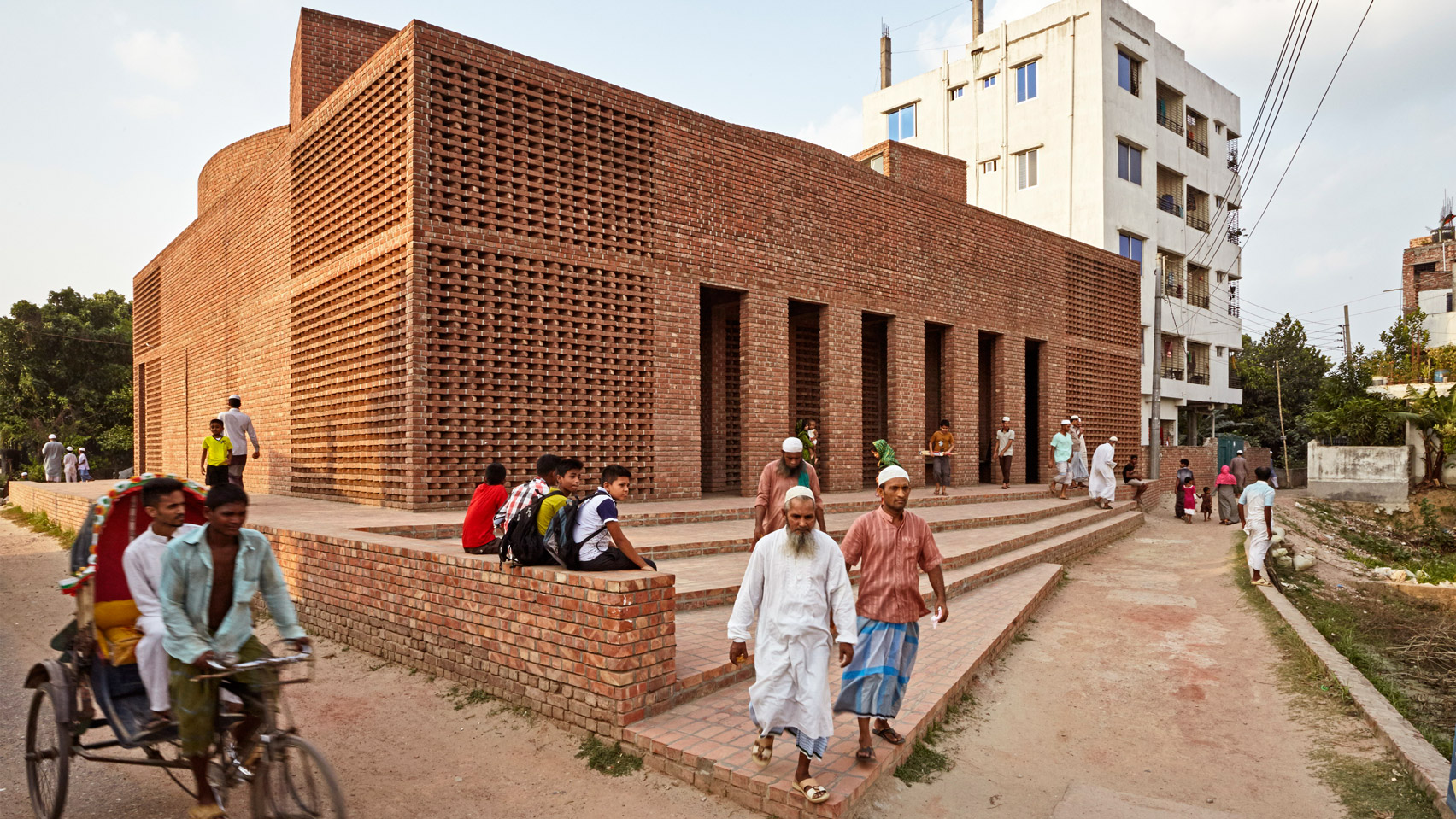
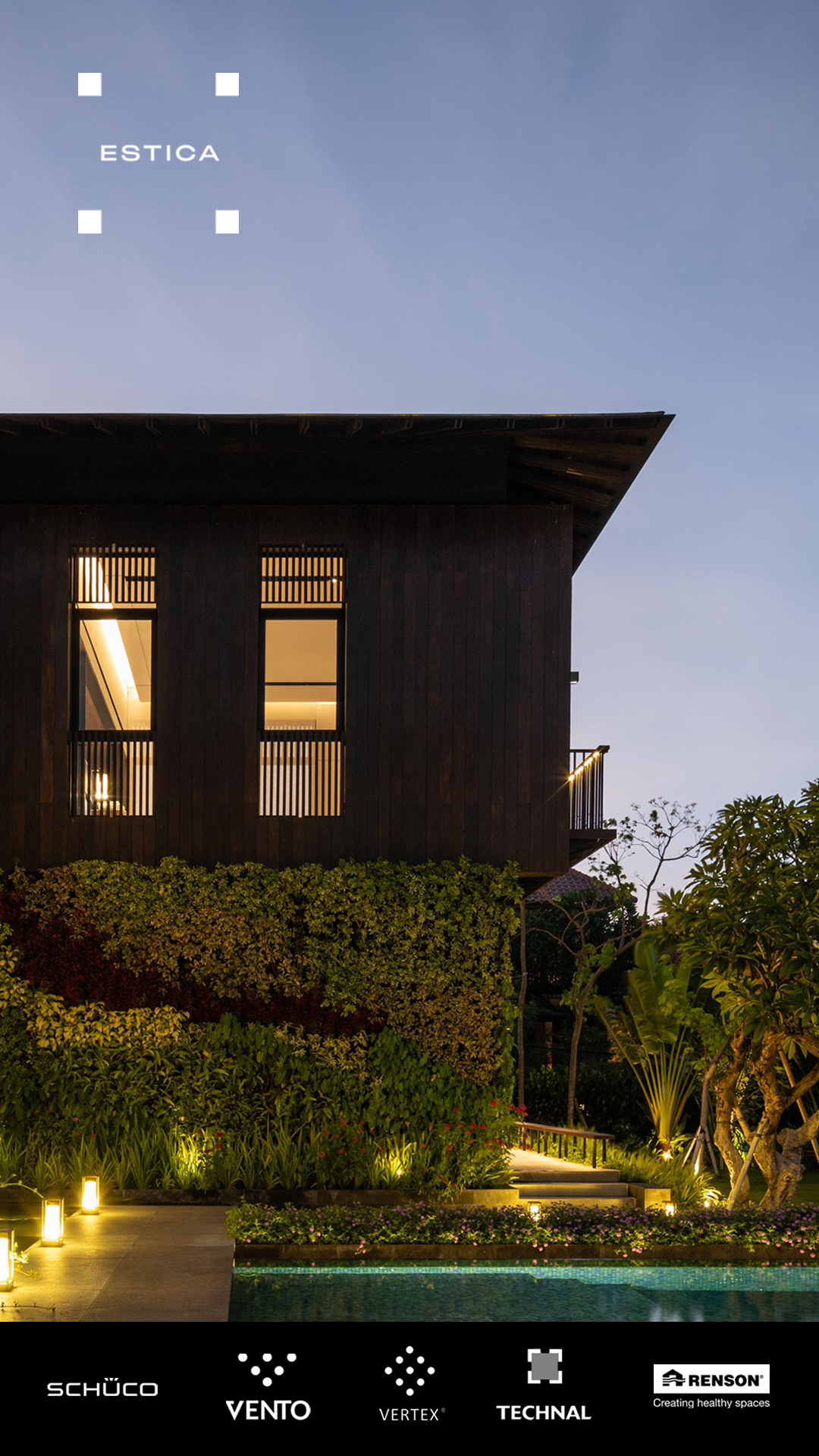
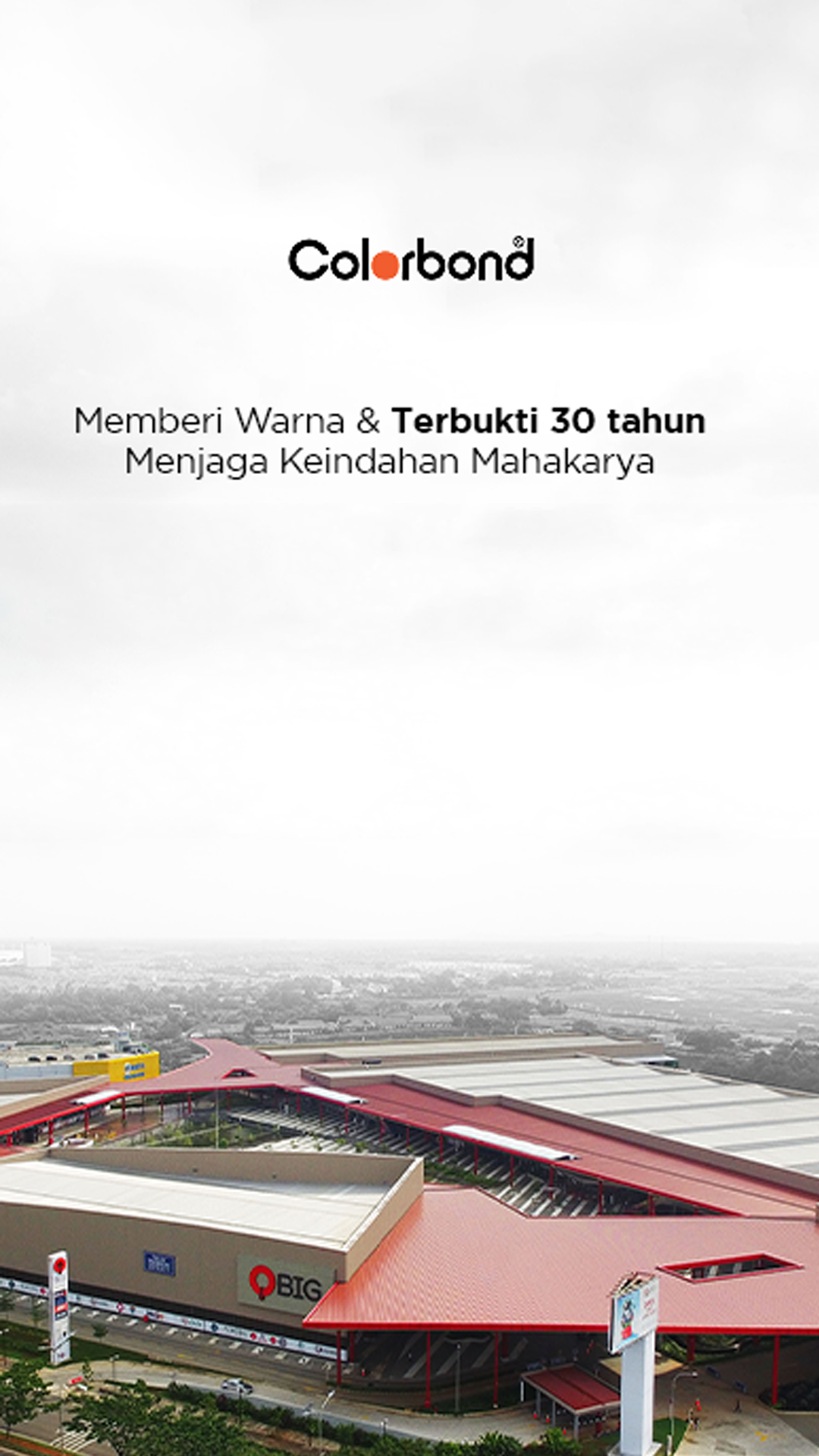
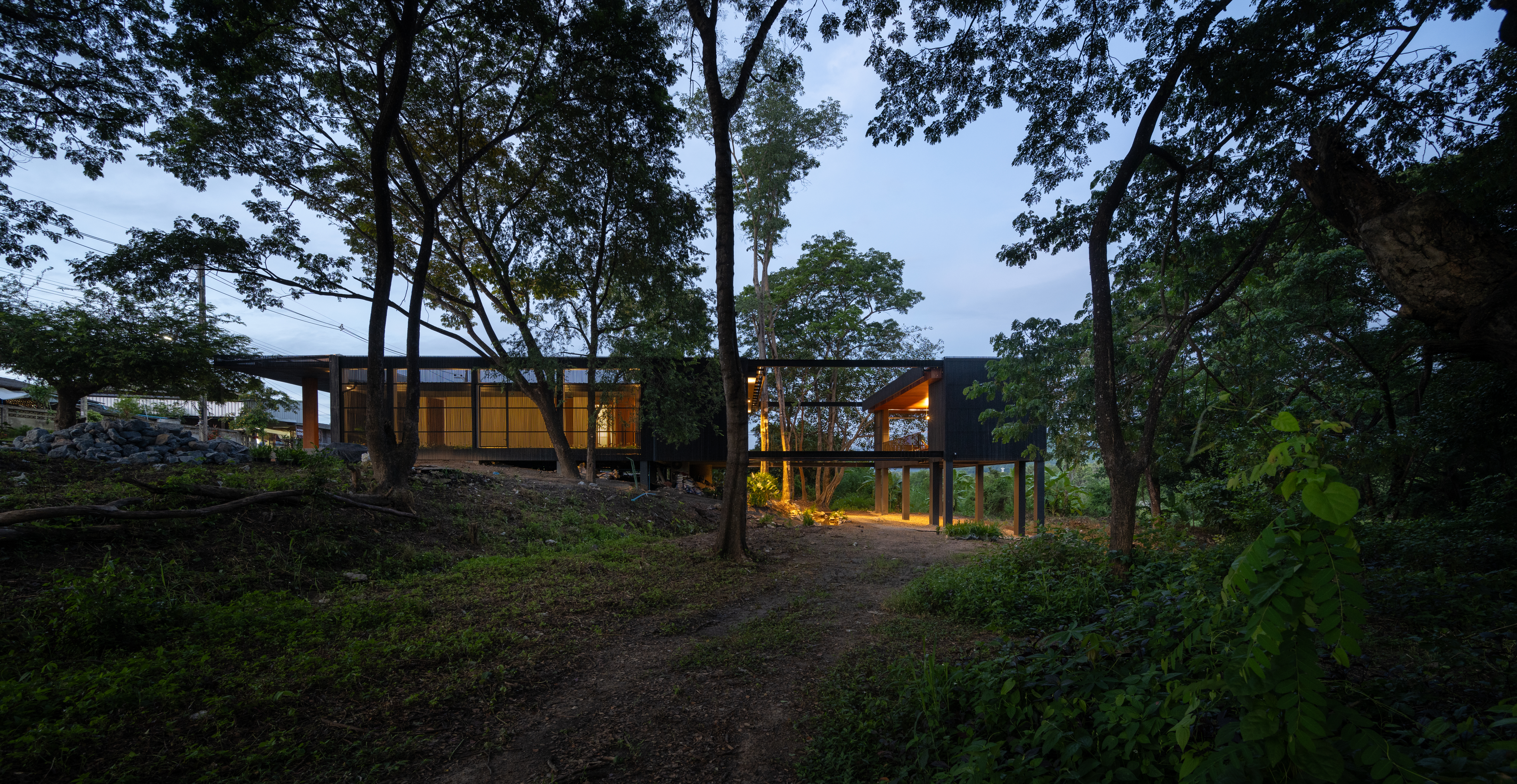
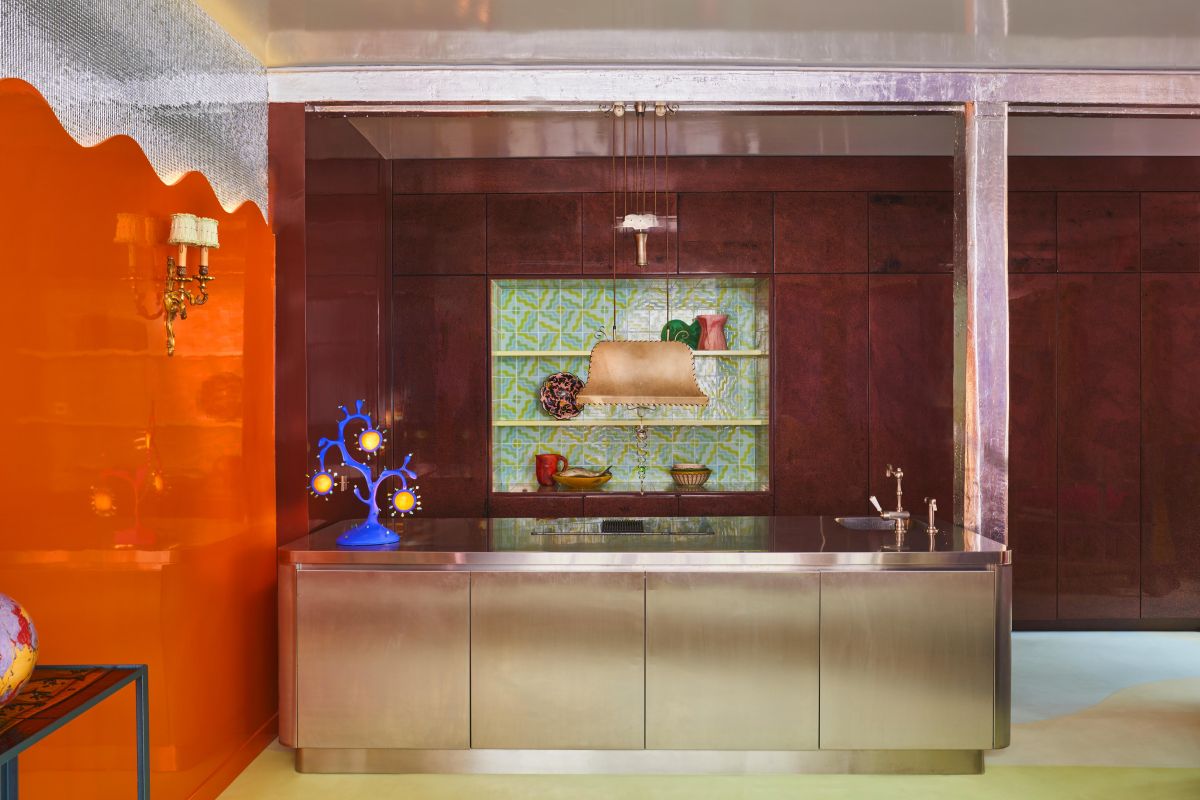

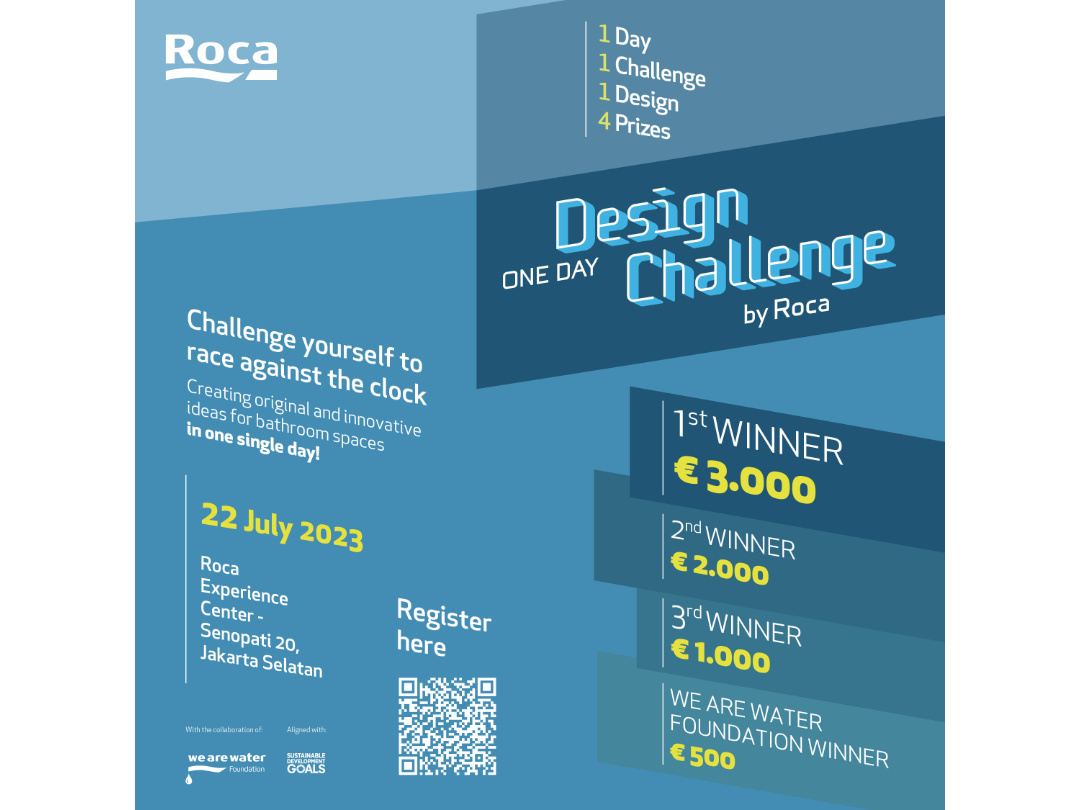

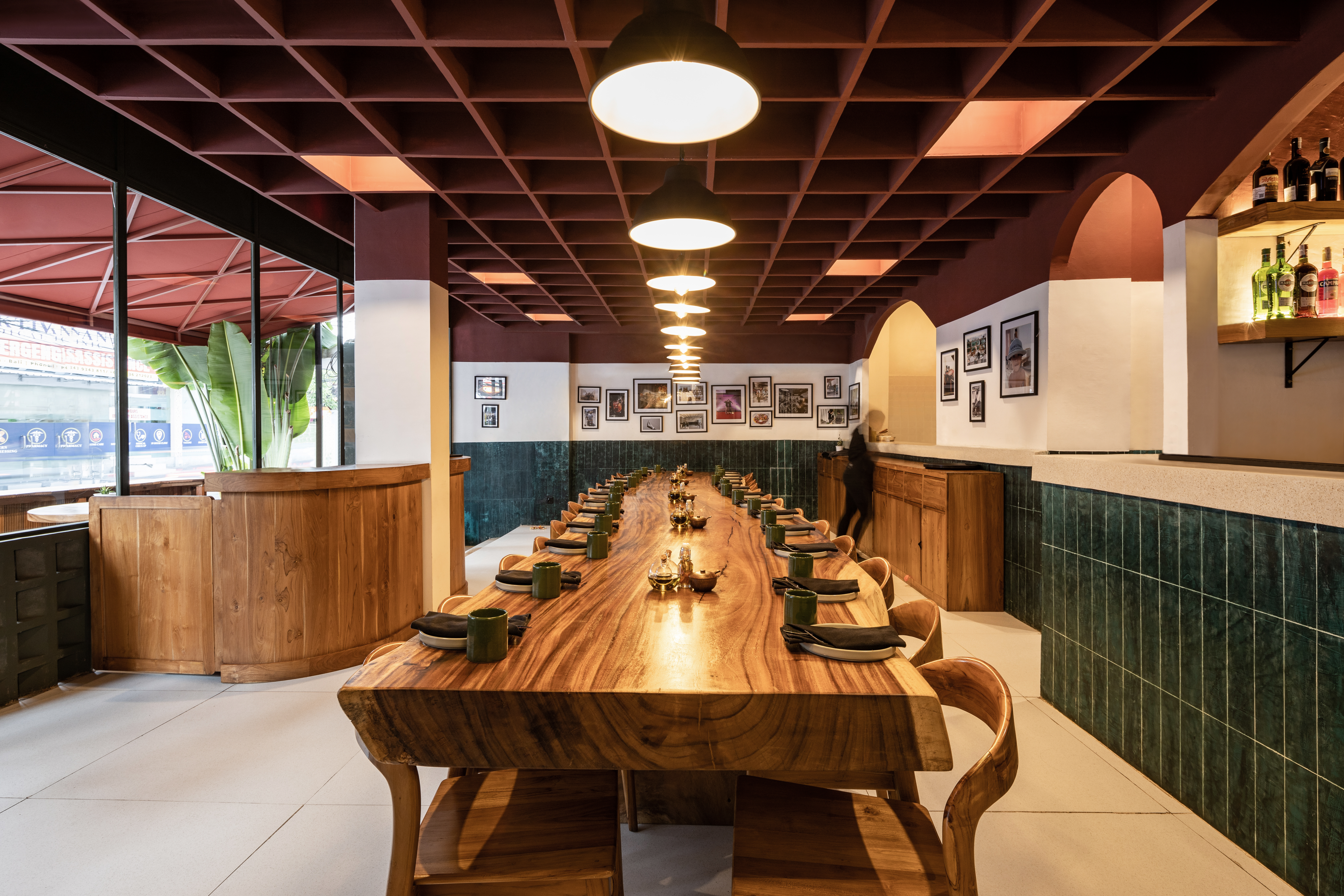
Authentication required
You must log in to post a comment.
Log in